Tel Aviv’s coolest fashion boutiques! Israel vintage & vegan clothes, Super Mario Nintendo nail art.

Let’s continue my indie shopping tour of Tel Aviv! In part 1 of my TLV Style Tour, my guide Galit Reismann introduced me to a mad hatter and jewelry designer. Now, we’ll discover the sweetest twee and vintage fashion in Israel.
(Details of my Very Metal dress and Goth cross tights are in this outfit post.)

We began with a walk through the fashion-centric Noga district. Small clothing shops and cafes huddle next to pastel street art featuring eyeballs.
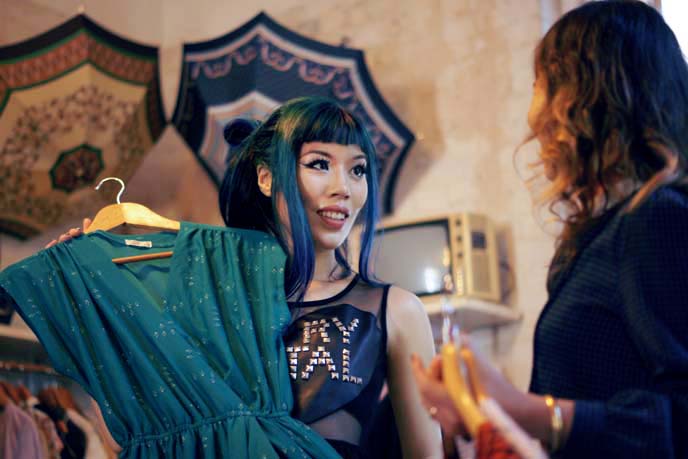
Galit took me to Roni Kantor’s studio, which doubles as a boutique. I was charmed by Roni’s retro-chic designs, especially her reconstituted vintage dresses. This one perfectly matched my hair color.
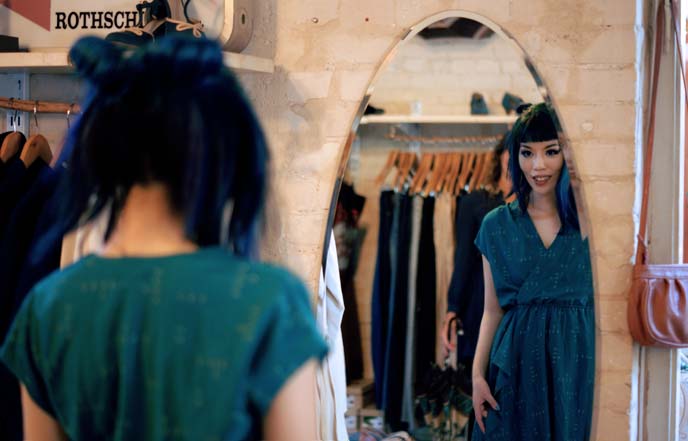
I was right behind her mission of upcycling and respecting living creatures. Roni is particularly loved for her vintage-inspired shoes, made from vegan leather in a family factory.

Galit, Roni and I twirled parasols for the travel video, which my team is working on now. In the foreground, you can see Roni’s darling footwear collection.
(Photography by Eric Bergemann and Melissa Rundle, who were hosted along with me on this press trip.)

Then, we took a short walk to Pioo Pioo, a gem of a boutique near the nightlife-centric Rothschild Boulevard. Try saying the name out loud. It mimics the sound of a laser gun!

I instantly felt that designer Mor Bauer and I are kindred spirits. Absolutely loved her colorful rocketship dress with fringe at the bottom, creating the movement of a blast-off. Her rainbow jewelry would feel at home in Harajuku or Shibuya.

Mor’s tailoring is beautiful, and she uses fine materials like silk. The jacket’s striped interior reminded me of Beetlejuice.

Her clothes can be dressed up or down, suiting a variety of personal styles.

The boutique is decorated with retro rainbow toys, an extension of Mor’s whimsical taste.

I particularly liked her grapes-and-leaves headbands, and fun embellishments like a baby’s head on a zipper.
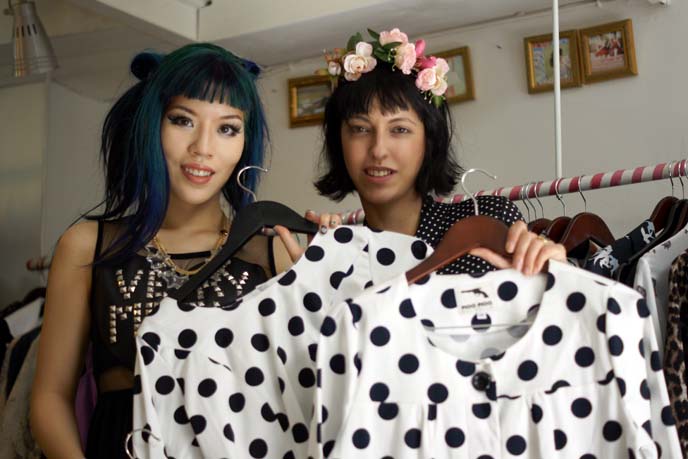
Flower crowns, polka dots and crop tops.

Mor wore this creation when she walked down the aisle. Two unicorns are better than one.

She’ll custom-make clothing for you, and specializes in sewing romantic, lacy wedding dresses.
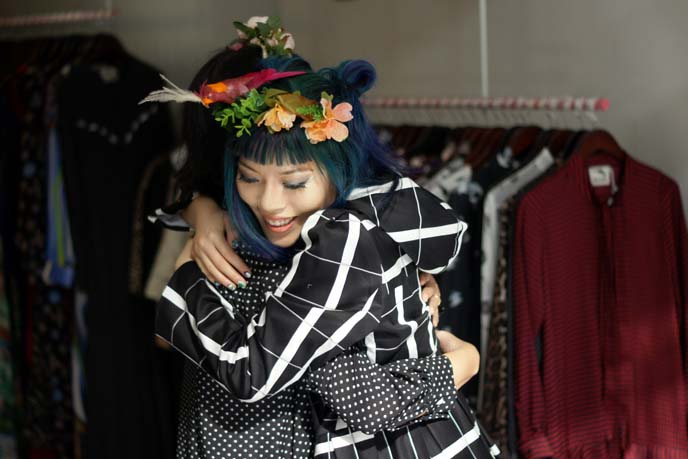
I felt so much at home, at Pioo Pioo. Thanks to Galit for the custom fashion tour (find out more on her TLVStyle Facebook), and hugs for all the talented Israeli designers I met!

Here’s a bonus photo of my Nintendo nail art, by Glam Nail Studio. I asked for green and blue designs from the Super Mario universe, to match my hair. See if you can spot Boo, Luigi, a Koopa turtle shell, mushrooms and a POW block in there.

Do you ever wear vegan or vintage fashion? What do you think of the unicorn dress and Nintendo nails?
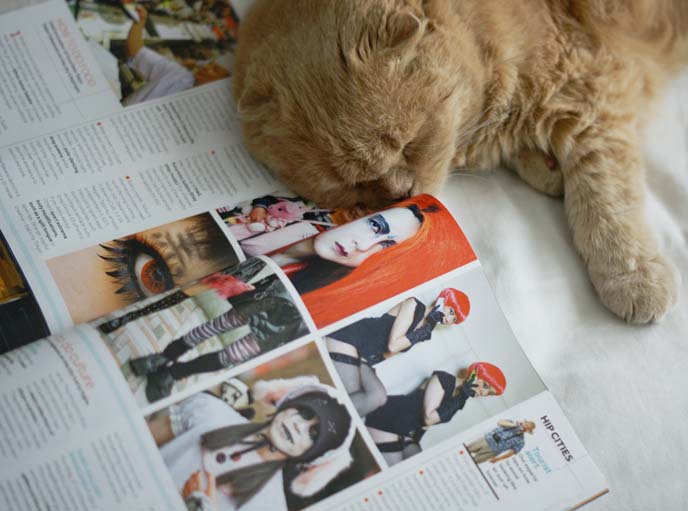
PS: I wrote a guide to alternative Japan for the Sunday Times Travel Magazine, one of the world’s leading travel publications. My plush cat Basil Farrow is blocking my byline…
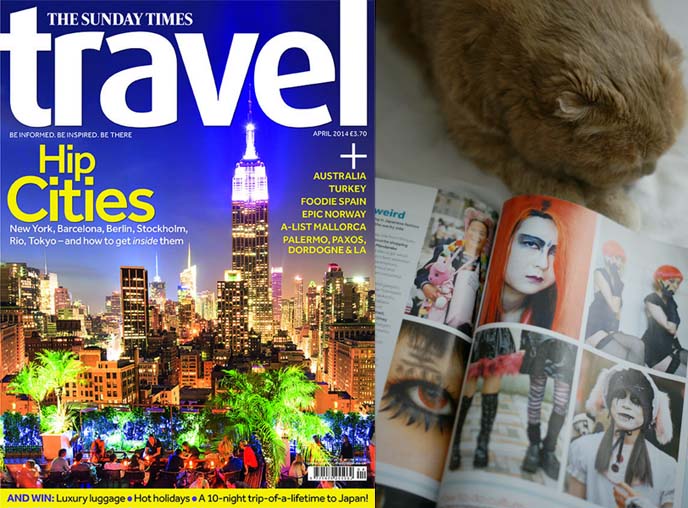
You can pick up the April issue about “Hip Cities,” in stores now. Looking forward to writing more for this UK-based magazine.
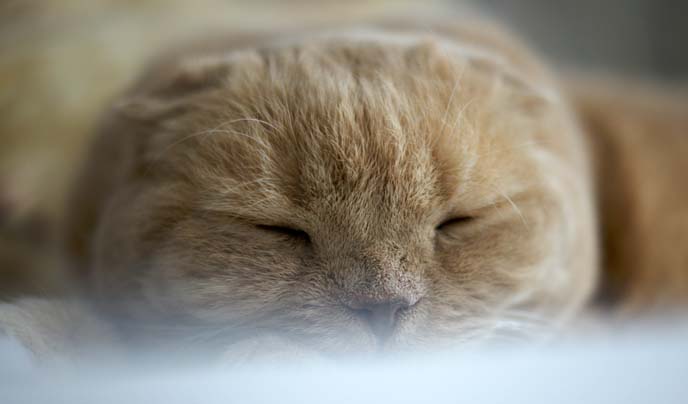
PPS: have you seen the photos of this fuzz-face on my @lacarmina Instagram, including a video of him jumping and wahh-ing?
Have a cute week!
SHARE & COMMENT
Moi-meme-Moitie graveyard dress! Eco Oscars Lounge gifting suite, Austin Young makeover gallery.
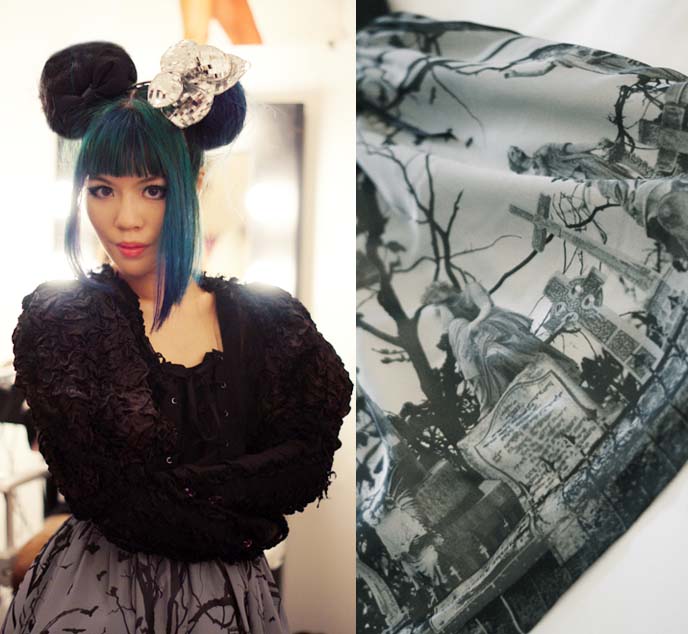
The Academy Awards were the perfect occasion to debut my Moi-meme-Moitie graveyard dress! I wore it to the Eco Oscars gifting suite, at the Beverly Hills Hilton hotel.
I’ve had my eye on this Gothic Lolita dress (by Mana’s EGL label) since it was first released. This is my favorite from the collection: a JSK with corset lacing down the front, with a dark romantic cemetery print around the bell-skirt. When I was in Tokyo last December, I had a Closet Child discount and saw it on display. Done and done.

I coordinated the Moitie dress with a long-sleeved demi-jacket by Marble; it matches the fabric and lacing. My “Minnie Mouse” hair is by Stephanie Hoy in Vancouver; here are more photos of my cheeky gyaru hairstyle. Do you like this unconventional styling?
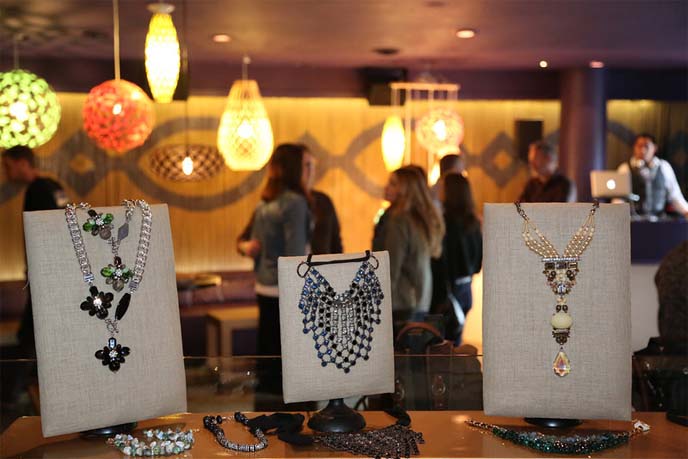
I was invited to the Eco Oscars 2014 gifting lounge, where socially-conscious brands give products to celebrities and influencers. It’s a great way to get the word out, discover new goodies, and (of course) honor the Academy Awards nominees.

Inside the Beverly Hilton, invitees helped themselves to tequila cocktails and snacks. We browsed the various stations, which gave out jewelry, gowns, hotel stays and more.
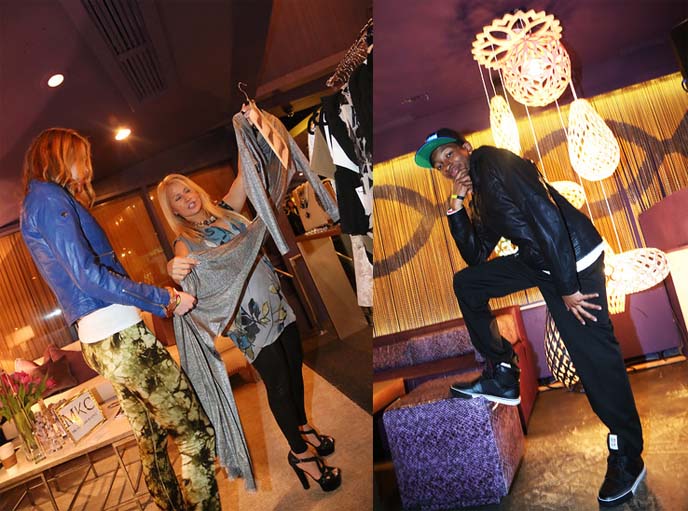
I enjoyed meeting creative industry people, like young actor Skylan Brooks, who starred in “Mister and Pete” with Jennifer Hudson.
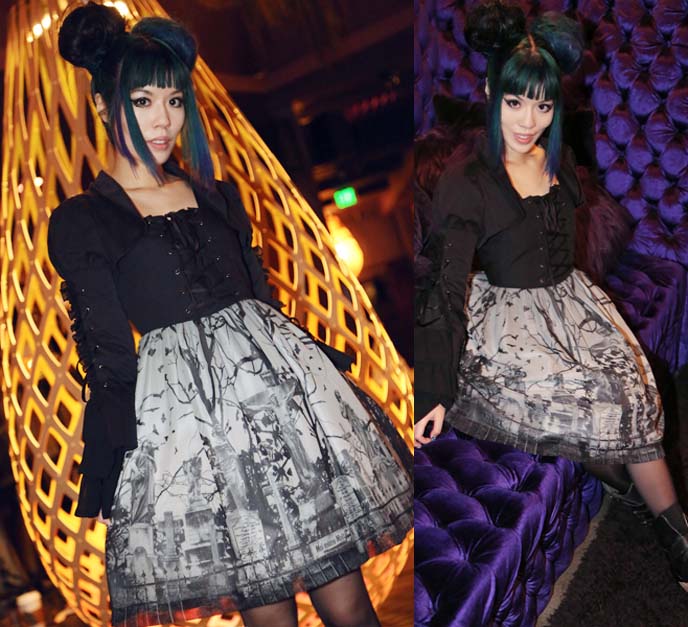
That day, I picked up light-up lipgloss, argan oil, makeup and more. (Above four photos by Katya Williams.)

The kind folks at Canine Caviar gave my celebrity cat some holistic, grain-free food to try! Basil Farrow gives it two sideways-paws up. (He watches his dad Ronan Farrow’s TV show with close attention.)

Love the eco-friendly focus of the gifting suite, such as these funky lamps by David Trubridge. Thanks to the 2014 Eco Oscars Lounge for inviting me to experience this very special event.

Later, I went to a very different party: the opening of photographer Austin Young’s “Glamour Shots” Makeovers, at the recently-opened Good Luck Gallery in Chinatown.

Austin Young invited guests to take part in an interactive photo shoot. Makeup artists helped you get glammed up, and then you could play dress-up from a rack of feather boas, vintage hats and other decadent garments.

Such a fun atmosphere. The space was packed with underground types; I spotted drag queens, burlesque makeup and sequined corsets.

Always a pleasure to see Lenora Claire, red-haired mistress of ceremonies.

The walls of Good Luck Gallery displayed some images from Austin Young’s “Tranimal” series. This aesthetic fuses drag fashion and makeup with surrealism, often with exaggeration of gender.

Provocative, startling, colorful and joyous: I’m a big fan of his work. More on Austin Young’s site.

Only in Los Angeles can you attend a Beverly Hills gift lounge and underground art happening on the same day! What’s your impression of these two events?
I’ve been blogging about LA clubs, shops and more for years; check out more of my Los Angeles travel and fashion posts, and leave me a comment if you have questions about the city.
 LA CARMINA
LA CARMINA






